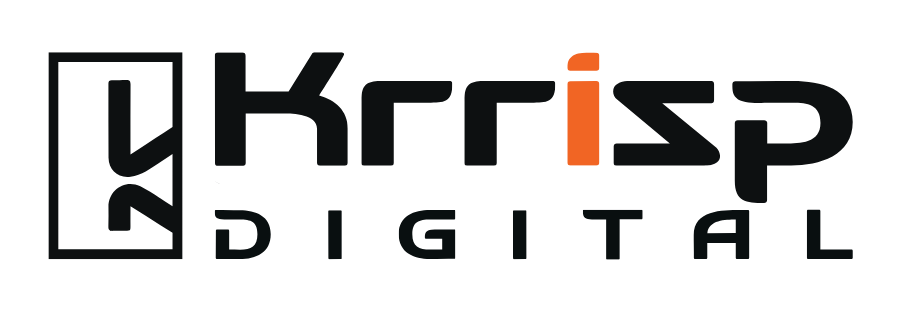Complete Guide to Website Development Costs in Australia 2025
"How much does it cost to build a website in Australia?"
If you’re a small business owner asking this question, you’re not alone—it’s the #1 question we hear from clients every week. The short answer? Between $500 for DIY and $50,000+ for advanced custom builds, with most Australian small businesses investing $5,000-$12,000 for a professional site.
But that top-line number doesn’t tell the full story. Website costs vary dramatically based on complexity, design requirements, functionality, and who builds it. A $5,000 website from one agency could be vastly different from a $5,000 website from another.
In this comprehensive 2025 guide, we’ll break down exactly what you’ll pay based on your specific needs, reveal hidden costs most businesses miss, and show you how to ensure your website investment delivers measurable ROI within 12-24 months.
Quick Answer: What Does a Website Cost in Australia? (2025)
Typical investment for Australian small businesses: $5,000-$12,000
Full cost spectrum:
- DIY (Wix, Squarespace, Weebly): $500-$2,000/year
- Freelancer + WordPress: $2,000-$8,000 one-time
- Professional Agency: $5,000-$20,000 one-time
- Advanced Custom Site: $20,000-$50,000+ one-time
- E-Commerce Store: $10,000-$100,000+ one-time
Biggest cost drivers: Website type and complexity, design customization level, number of features and pages, who builds it (DIY vs freelancer vs agency), and professional content creation.
Hidden ongoing costs: Budget an additional $1,500-$13,000+ per year for hosting, maintenance, security updates, and digital marketing to drive traffic.
ROI timeline: Most businesses see positive ROI within 12-24 months when combined with proper SEO and marketing strategies.
Keep reading for the complete breakdown, comparison tables, and expert recommendations →
Website Development Cost Overview: Australia 2025
Here’s a comprehensive breakdown of what Australian businesses are paying for website development in 2025:
Industry Insight: According to our analysis of 50+ Australian projects in 2025, most small businesses invest $5,000-$12,000 for a professionally designed and developed website that includes strategic planning, custom design, mobile optimization, and basic SEO.
If you’re ready to explore professional website development services tailored to your business goals, Krrisp Digital’s custom website development team in Sydney specializes in creating high-performance websites that combine stunning design with conversion-focused functionality.
DIY vs Freelancer vs Agency: Which Should You Choose?
One of the most common questions we hear is: “Should I build it myself, hire a freelancer, or work with an agency?” Here’s an honest comparison to help you decide:
At-a-Glance: Complete Comparison
When to Choose Each Option
What Actually Influences Website Development Costs?
Understanding what drives pricing helps you budget accurately and evaluate quotes intelligently. Here are the seven primary factors:
1. Website Type and Complexity
The single biggest cost driver is what type of website you’re building:
2. Design Customization Level
Design quality and uniqueness significantly impact cost:
3. Number of Pages and Features
Every page and feature adds development time and complexity:
By Page Count:
- 5-page website: $3,000-$6,000
- 10-15 page business site: $6,000-$12,000
- 25+ page complex site: $12,000-$30,000+
- 50+ page enterprise site: $30,000-$100,000+
Common Feature Costs:
Pro Tip: Prioritize features for your initial launch. It’s often more cost-effective to start with core functionality and add advanced features in phase 2 after validating your concept.
4. Mobile Responsiveness and Performance Optimization
In 2025, mobile-first design isn’t optional—it’s essential. Google’s mobile-first indexing means your mobile site determines your search rankings, and over 60% of Australian website traffic comes from mobile devices.
Why it matters: Google uses page speed as a ranking factor. A 1-second delay in page load time can reduce conversions by 7%. For SEO-focused websites, performance optimization is non-negotiable.
5. Content Creation Investment
Many businesses underestimate content costs, but quality content is crucial for both user experience and SEO performance:
Pro Tip: Quality content directly impacts conversion rates. Investing in professional copywriting often pays for itself through improved lead generation and sales conversions. Our team can connect you with experienced content creators, or our digital marketing team can handle end-to-end content strategy as part of a comprehensive package.
6. Integrations and Third-Party Systems
Connecting your website to other business tools increases functionality but adds development complexity:
Common Integration Costs:
7. Ongoing Website Maintenance and Support
Your launch cost is only part of the total investment. Every website requires ongoing care:
Hosting and Domain Costs:
How Do Website Costs Vary Across Australian Cities?
Website development pricing shows moderate regional variation across Australia in 2025:
Regional Pricing Breakdown:
Why Price Variations Exist:
Higher costs in Sydney/Melbourne:
- Higher operational costs (office rent, salaries)
- Greater competition driving specialization
- More complex client requirements
- Premium positioning expectations
Lower costs in regional areas:
- Lower business overheads
- Different cost of living
- Less competitive market pressure
Important 2025 Trend:
Remote work has minimized regional pricing differences. Many agencies now offer consistent nationwide pricing regardless of client location. For example, Krrisp Digital serves clients across Sydney, Melbourne, Newcastle, Bella Vista, Central Coast, and beyond with transparent, location-independent pricing.
Pro Tip: Don’t choose an agency based solely on location or price. Focus on portfolio quality, relevant experience, communication style, and strategic approach. A Sydney agency charging 15% more might deliver 50% better ROI through superior strategy.
What Are the Hidden Costs of Website Development?
Beyond the quoted development price, several hidden costs catch businesses off guard:
1. Additional Rounds of Revisions
Most agency contracts include 2-3 revision rounds. Additional changes cost $100-$200/hour. Clear communication upfront prevents expensive revision cycles.
How to avoid: Provide detailed feedback in organized batches rather than ongoing small changes.
2. Premium Plugins and Software
Many advanced features require premium plugins or subscriptions:
- Premium WordPress plugins: $50-$300/year each
- Form builders (Gravity Forms): $60-$260/year
- Page builders (Elementor Pro): $50-$1,000/year
- Security plugins: $100-$400/year
- Backup solutions: $50-$300/year
- E-commerce extensions: $100-$500 each
How to avoid: Ask about ongoing software costs during the quote phase.
How to avoid: Provide detailed feedback in organized batches rather than ongoing small changes.
3. Content Migration
Moving from an old website to a new one:
- Basic migration (10-20 pages): $500-$1,500
- Complex migration (hundreds of pages/products): $2,000-$10,000+
- Blog post migration with SEO optimization: $50-$100 per post
4. Training and Onboarding
Learning to manage your website:
- Basic training (2-3 hours): Usually included
- Comprehensive training: $500-$2,000
- Video tutorial creation: $1,000-$3,000
- Ongoing training for team: $200-$500/session
Most agency contracts include 2-3 revision rounds. Additional changes cost $100-$200/hour. Clear communication upfront prevents expensive revision cycles.
How to avoid: Provide detailed feedback in organized batches rather than ongoing small changes.
5. Launch Delays and Rush Fees
Timeline changes impact costs:
- Rush delivery (50% faster): +25-50% premium
- Scope creep: Can add 20-100% to original quote
- Extended timelines: May incur additional project management fees
6. Photography and Assets
- Professional photoshoot: $500-$2,000/day (often underestimated)
- Licensed stock photos: $10-$100 each (vs free low-quality options)
- Custom icons and illustrations: $300-$1,500 each
- Video content: $1,000-$10,000 per video
7. SSL Certificates and Security
While basic SSL is often free (Let’s Encrypt), enhanced security costs extra:
- Extended Validation (EV) SSL: $150-$500/year (green address bar)
- Wildcard SSL (multiple subdomains): $200-$600/year
- Security audits: $1,000-$5,000 annually
8. Legal and Compliance
Australian businesses need:
- Privacy Policy creation: $300-$1,500 (legally compliant)
- Terms and Conditions: $500-$2,000
- Cookie consent implementation: $300-$1,000
- Accessibility compliance (WCAG): $2,000-$8,000
- Legal review: $500-$2,000
Total Hidden Costs:
Budget an additional $2,000-$10,000 beyond your quoted development cost for these often-overlooked expenses.
Smart Strategy: Ask your agency for a complete cost breakdown including these items upfront. Transparent agencies will gladly walk you through the full investment picture.
How Long Does Website Development Take in Australia?
Timeline is closely related to cost. Here’s what to expect:

